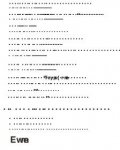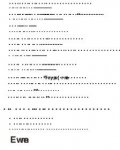I'm sure we've all seen some interesting problems, so I thought we could have a little fun with this thread. Since these are solved problems maybe we can learn a little something. Here's mine:
Buckslips for a customer that we've done for at least a decade which would always crash the RIP.
I could get them to run 1-up. Back in the film days, I would correct the problem on the light-table or in the vacuum frame by stepping or stripping. Then we moved to CTP and the job came in again. I prayed that the newer RIP could handle it. Nope.
We reluctantly asked the customer if they could think of anything. We tried sending it to the other printing companies we are friendly with. It crashed everyone's RIP. No one could figure out how to get this file through successfully.
I finally did a binary search to find the problem. I deleted 1/2 the elements on the piece, tried to rip it, deleted half of the "bad" half, etc, until I found the elements causing the problem. The files were gigantic and would take 15 min just to see if the RIP succeeded or crashed. I was there almost all night.
There were vector gradients they called "swoops" which were borrowed from a billboard they made. The swoops were well over 100 inches. On the buckslip they were simply linked, reduced, and cropped via InDesign. When I actually reduced the original swoop, the files ripped just fine. (Quite a pain to exactly resize and reposition a curved gradient)
SPECULATION:
Apparently while not a PostScript thing itself, many of the drivers and functions that these companies license have a limitation of 200 inches. The imposed file caused the element to extend beyond 200 inches. I guess that PDF and PostScript internals must not actually reduce the swoops, but instead include them full-size with reduction and cropping instruction.
We all see a ton of "normal" problems every day... but this was a "one-off" doozy of a problem.
Buckslips for a customer that we've done for at least a decade which would always crash the RIP.
I could get them to run 1-up. Back in the film days, I would correct the problem on the light-table or in the vacuum frame by stepping or stripping. Then we moved to CTP and the job came in again. I prayed that the newer RIP could handle it. Nope.
We reluctantly asked the customer if they could think of anything. We tried sending it to the other printing companies we are friendly with. It crashed everyone's RIP. No one could figure out how to get this file through successfully.
I finally did a binary search to find the problem. I deleted 1/2 the elements on the piece, tried to rip it, deleted half of the "bad" half, etc, until I found the elements causing the problem. The files were gigantic and would take 15 min just to see if the RIP succeeded or crashed. I was there almost all night.
There were vector gradients they called "swoops" which were borrowed from a billboard they made. The swoops were well over 100 inches. On the buckslip they were simply linked, reduced, and cropped via InDesign. When I actually reduced the original swoop, the files ripped just fine. (Quite a pain to exactly resize and reposition a curved gradient)
SPECULATION:
Apparently while not a PostScript thing itself, many of the drivers and functions that these companies license have a limitation of 200 inches. The imposed file caused the element to extend beyond 200 inches. I guess that PDF and PostScript internals must not actually reduce the swoops, but instead include them full-size with reduction and cropping instruction.
We all see a ton of "normal" problems every day... but this was a "one-off" doozy of a problem.















